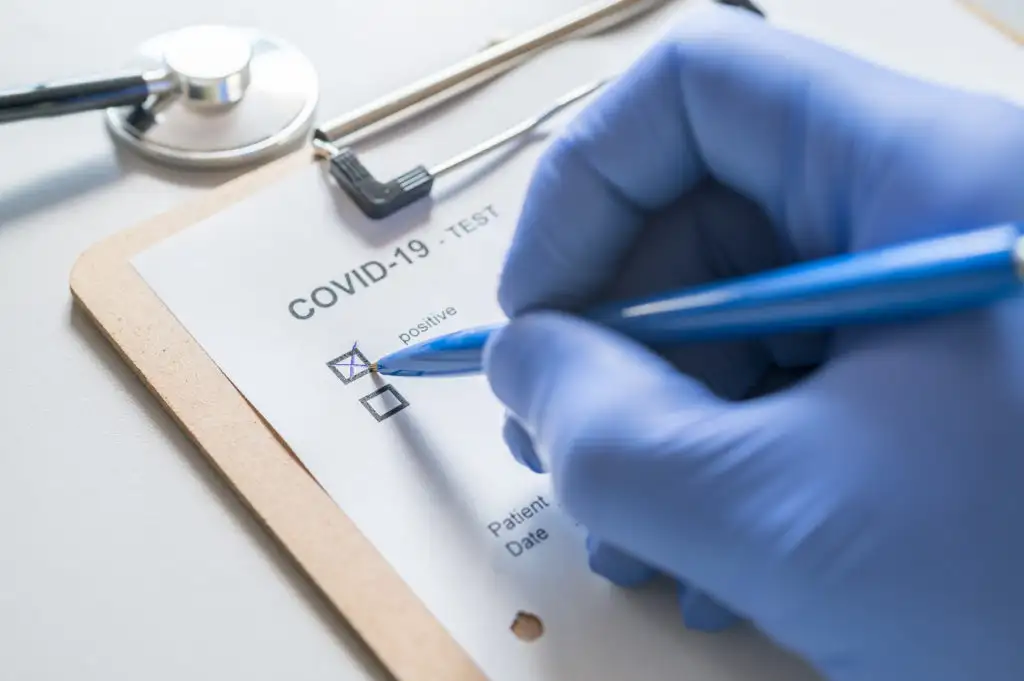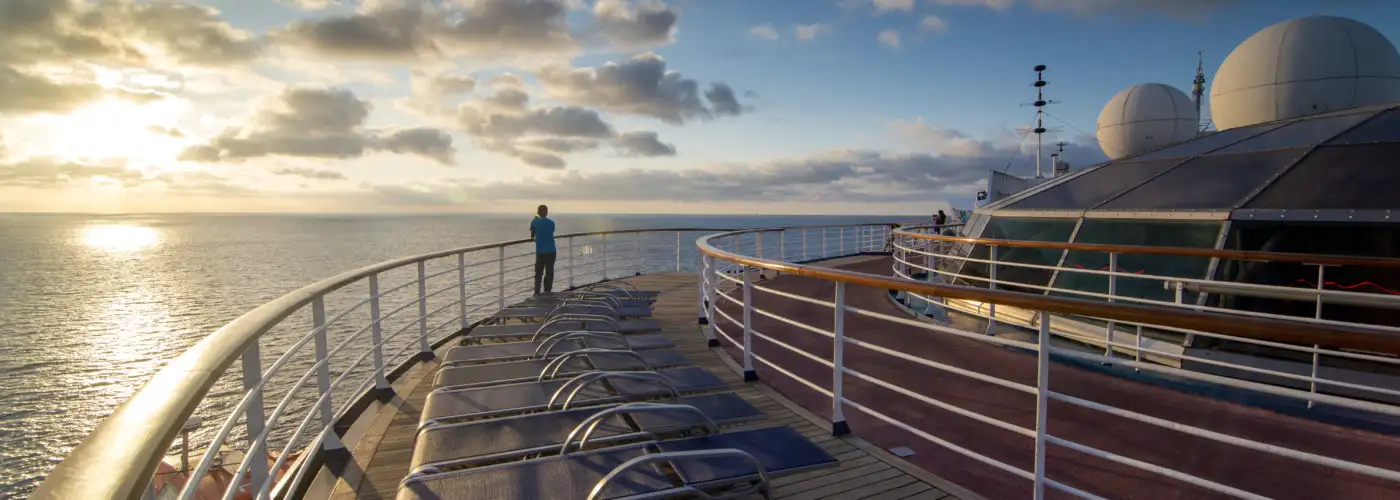During the past few months, cruise lines have worked tirelessly to develop ways to protect their passengers and crew, keep their ships clean, and still allow everyone to feel as though they can cruise safely and enjoy a vacation. But when you’re in a confined space at sea with hundreds or thousands of other people, the pandemic is still at the forefront of everyone’s mind. What happens if someone on a cruise tests positive for COVID-19?
How are COVID-19 Cases Identified Aboard a Cruise?

On my recent cruise through the Adriatic Sea, two of the passengers on our ship (the Viking Venus) tested positive for COVID-19 during the embarkation process. The positive cases were identified quickly, because within fifteen minutes of boarding, all guests were expected to give a saliva sample for testing.
The positive cases weren’t publicly announced to cruisers, however, some guests waiting to board the ship saw the clear and obvious sign that positive cases had been identified when they witnessed a team wearing hazmat suits board the vessel. Those passengers told me they saw the hazmat crew quickly board and remove the passengers from the ship. I later learned that the government of Malta (where the cruise was departing from) has an official “quarantine” hotel where the passengers from our ship, any other vessel, or flight would remain for 14 days at the cost of 100 euro per night. However, for the cruisers on my trip, Viking paid the bill. The cruise line also offered the passengers compensation for their missed sailing and flights home.
Will You Have to Quarantine if There Is a Positive COVID-19 Case on Your Trip?
Pandemic aside, not all cruise lines are created equal, so it’s not surprising that health and safety protocols on board vary widely at the moment. On Viking Cruises, all guests are given a GPS tracking device upon check-in that must be worn at all times on and off the ship. This small circular device is used to quickly identify guests who may have encountered any other guest or crew member for longer than fifteen minutes, at a distance of fewer than six feet who tests positive for COVID-19.
The positive passengers were traveling together, both fully vaccinated, and in the same stateroom. Due to the procedures designed to get guests quickly checked-in, on-board, and in their rooms for their first PCR test, there was a low likelihood that the positive passengers would have been in close enough proximity to others to infect them. The team in the lab checked for GPS devices that were close to those being worn by the positive passengers and the result was zero. Thankfully, no one else had been exposed and had to quarantine.
Do You Have to Take a COVID-19 Test on a Cruise?
On this cruise, all guests were required to take a daily COVID-19 test. During nightly turn-down service medical vials and testing instructions were left in each guestroom. Every morning cruisers had to give a saliva sample. This involved filling one vial with 2ML of saliva for an onboard PCR test.
The test requires a sample that is given right after waking up, before you’ve had coffee or even brushed your teeth. It’s a bit.. gross. I had a few nauseous moments.. and it’s not really something you get used to, but you do realize it’s for your safety and everyone around you, so you power through.
A representative for Viking told me that the requirement for 2ML of saliva is to ensure there’s an additional sample for a re-test, and, in this case, after a second positive result the infected passengers were notified to remain in their stateroom.
In addition to the daily PCR test and mandatory GPS tracker, we also had to complete a daily health/wellbeing questionnaire either on an app or on via the stateroom TV. Masks were required in all public areas (except for when eating or drinking). Temperature checks were also taken daily for every guest.
Expect Less Freedom Aboard Cruises
Additionally, because our sailing was scheduled to call on some ports in countries with a surge in COVID cases, passengers were not allowed to disembark the ship and explore the destination on their own. The only way to explore off-ship was to join one of Viking’s excursions.
If you wish to cruise during COVID you should be prepared to accept some responsibility. Before booking you should first explore the cruise line’s procedures to become knowledgeable of what’s expected of you and what you can expect onboard. Read the fine print and learn what would happen if you (or a close contact) tests positive aboard the cruise, and if you would be responsible for paying for your own off-ship quarantine accommodations or early flight home.
You Might Also Like:
• 5 Ways You’re Sabotaging Your Sleep While Traveling• The Ultimate Toiletry Kit Packing List
• Shark Safety Tips: Everything You Need to Know to Prevent or Survive a Shark Attack
• 5 Worst Shoes for Travel (And What to Wear Instead)
• The Best Over-the-Counter Sleeping Pills for Long-Haul Flights
We hand-pick everything we recommend and select items through testing and reviews. Some products are sent to us free of charge with no incentive to offer a favorable review. We offer our unbiased opinions and do not accept compensation to review products. All items are in stock and prices are accurate at the time of publication. If you buy something through our links, we may earn a commission.
Related
Top Fares From
Today's Top Travel Deals
Brought to you by ShermansTravel
France: 8-Night Paris, Avignon & Nice...
Infinity Worldwide Vacations
 vacation
$2880+
vacation
$2880+
Poconos: 3 Nts in Garden of...
ResortsAndLodges.com
 hotel
$305+
hotel
$305+
7-Nt Canada & New England Cruise,...
Princess Cruises
 cruise
$839+
cruise
$839+




